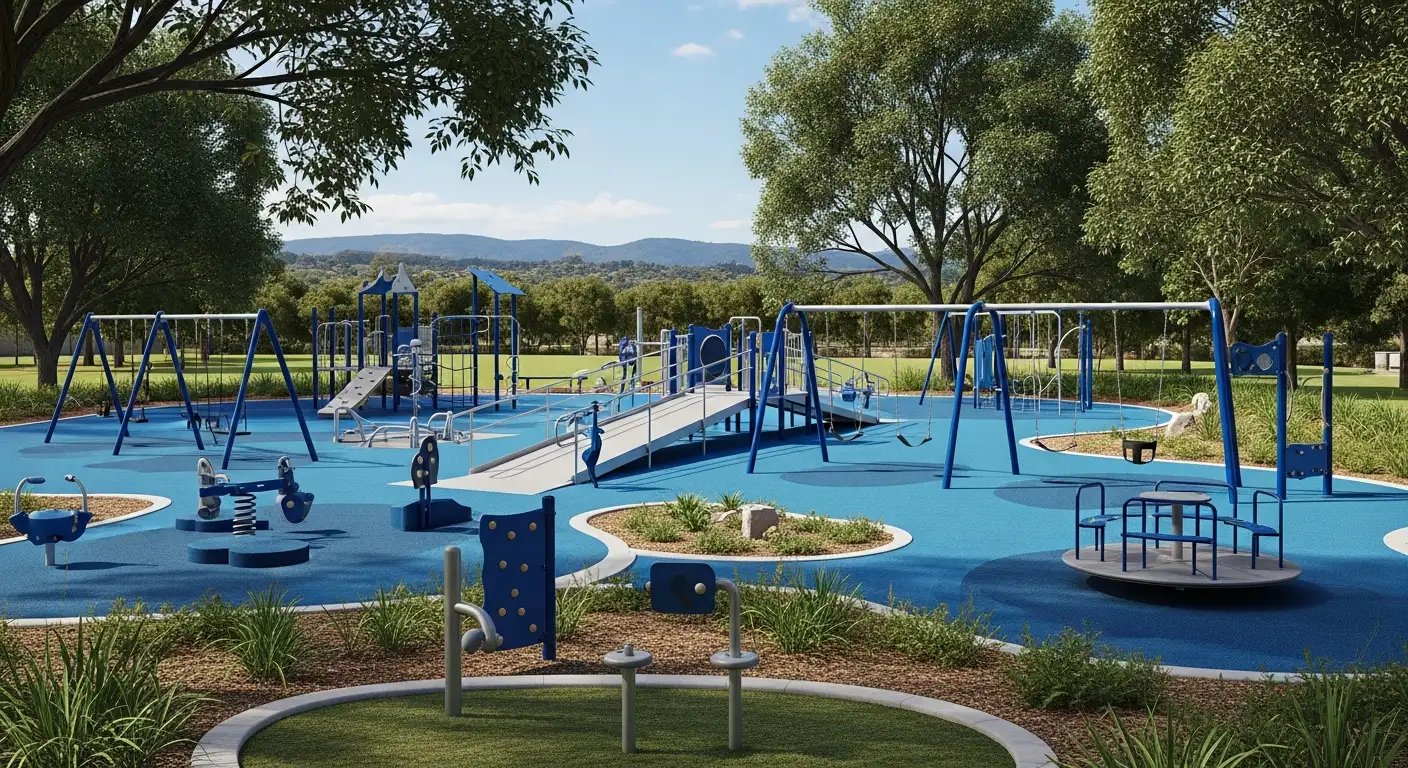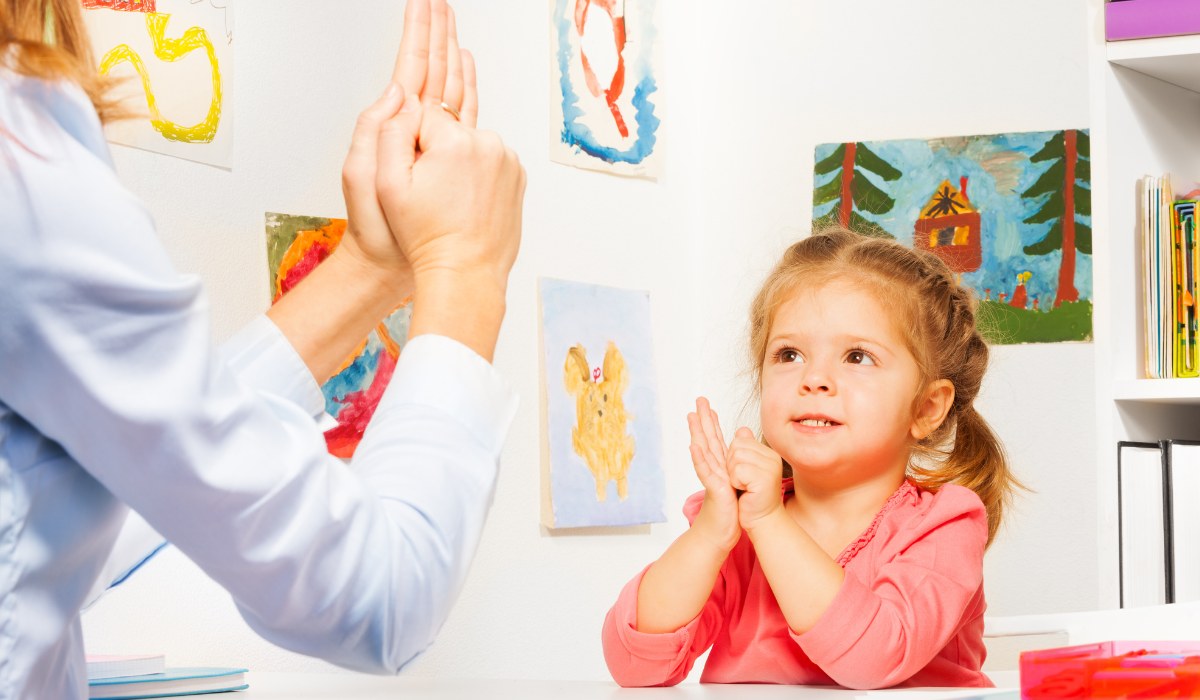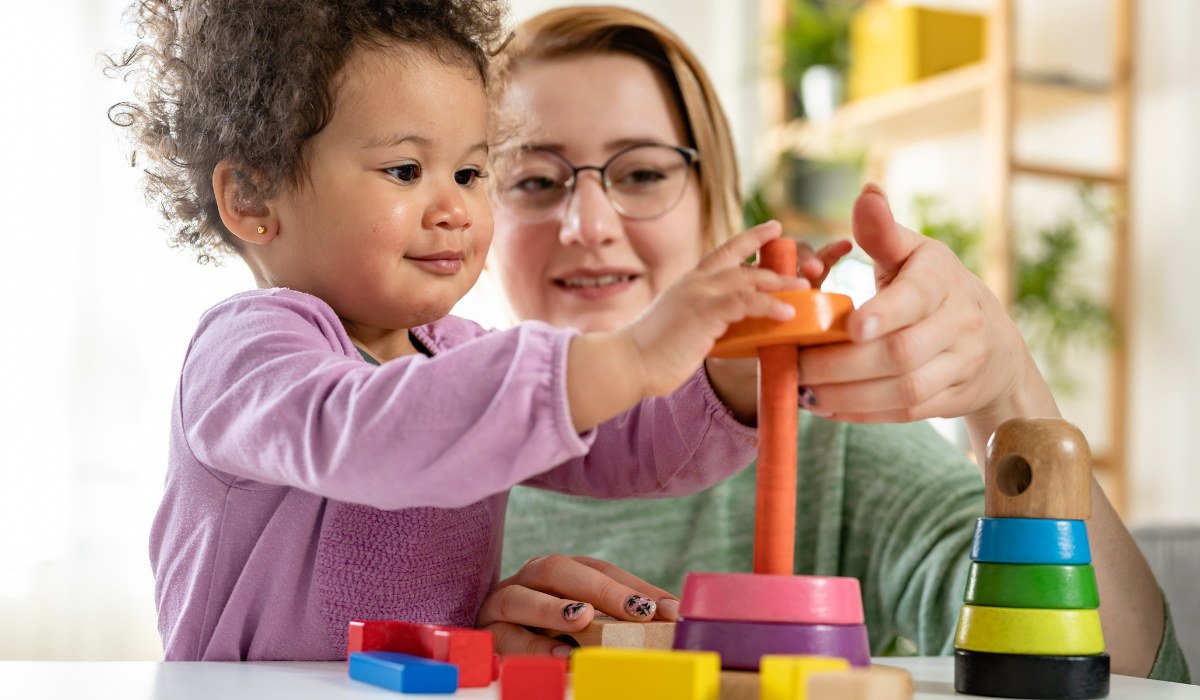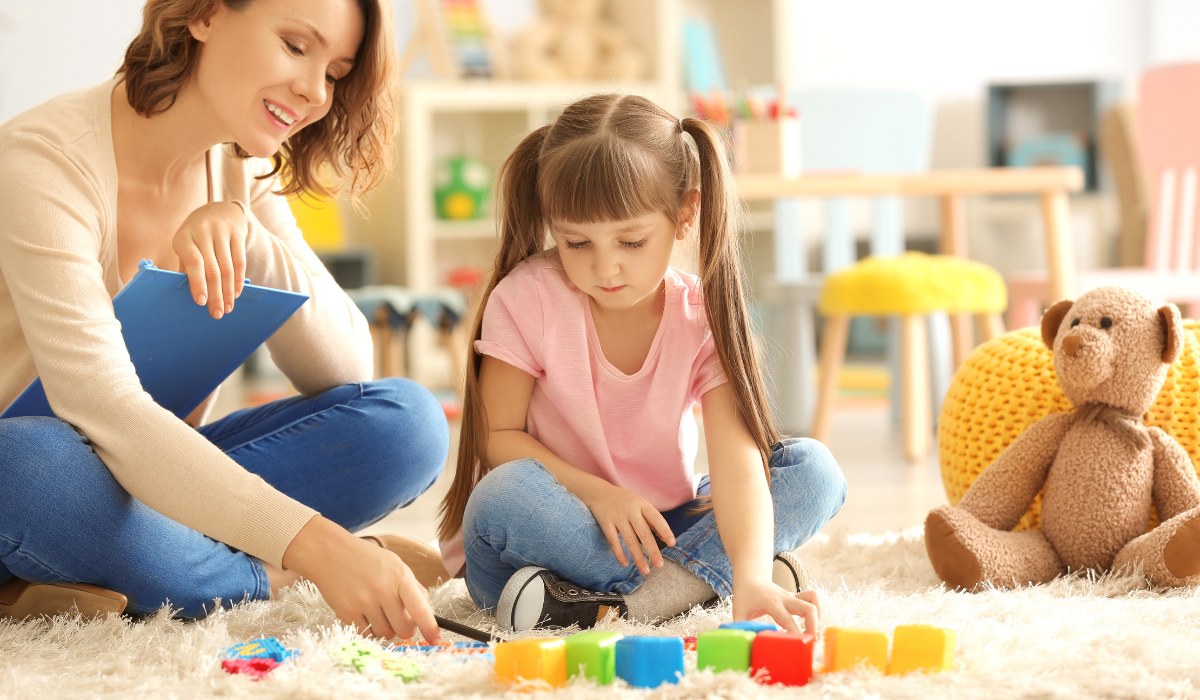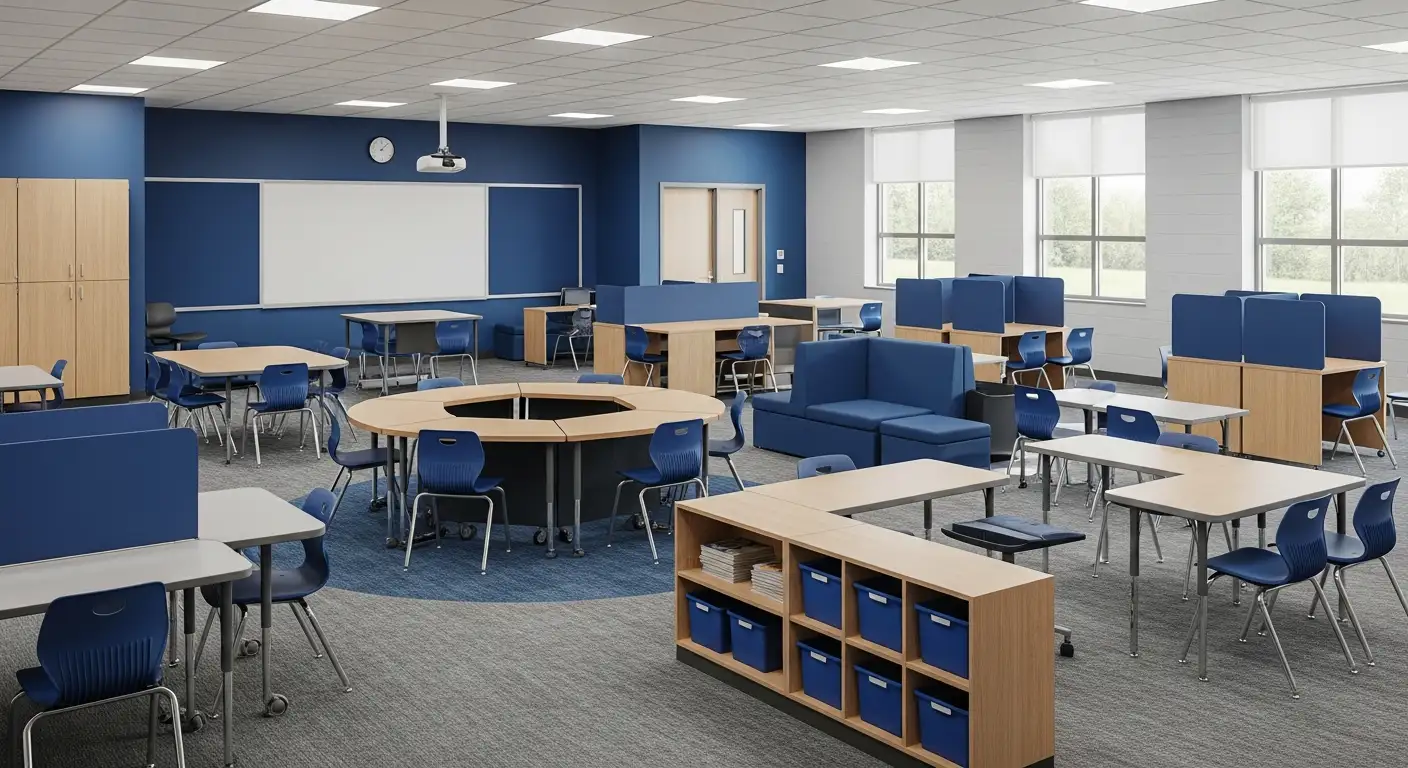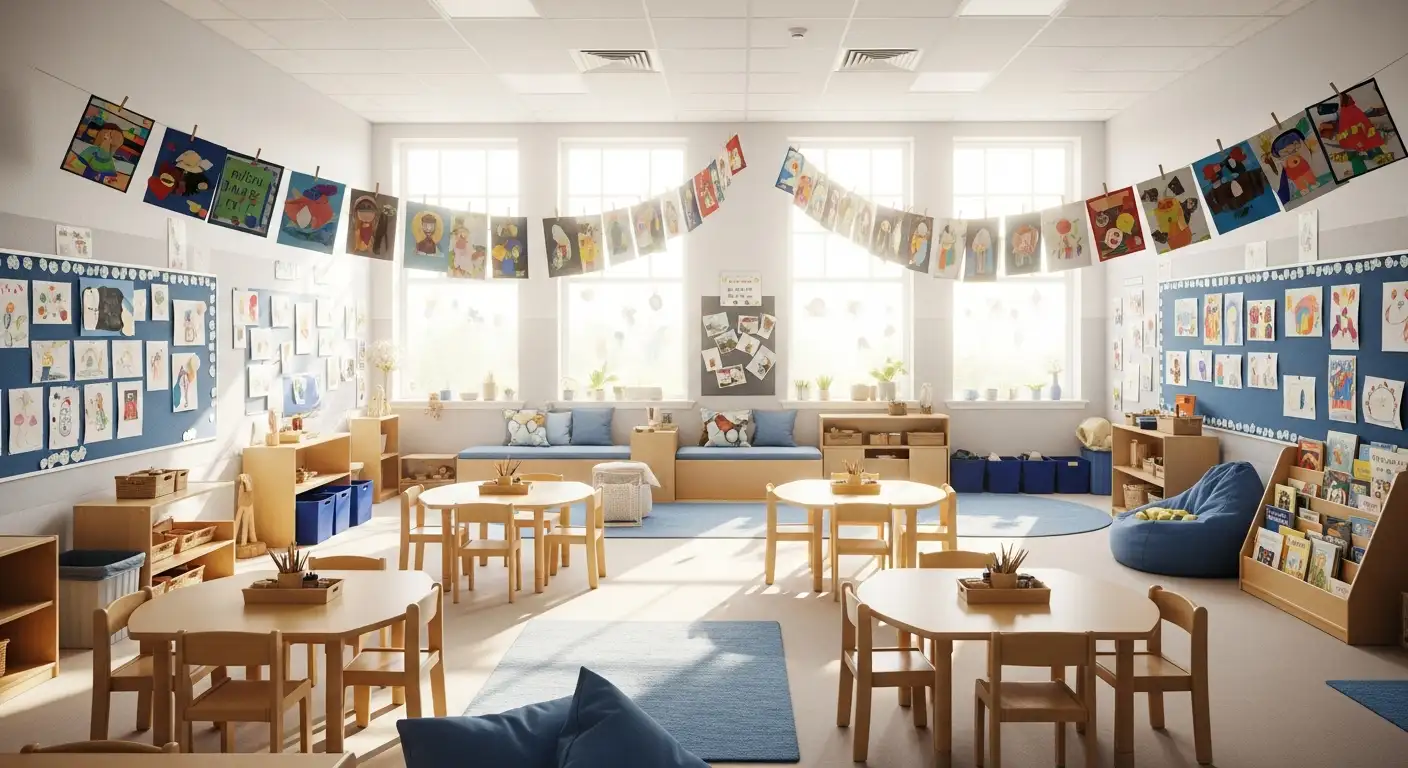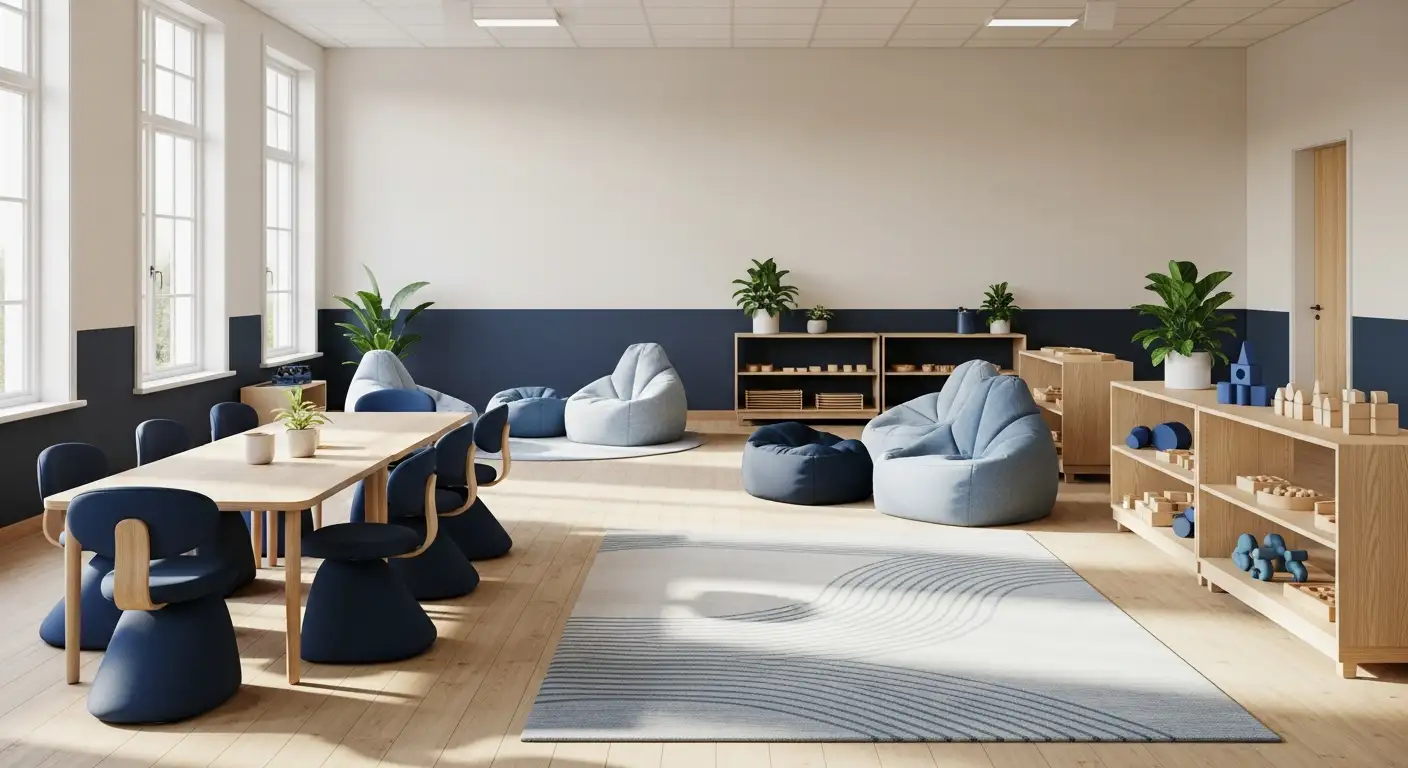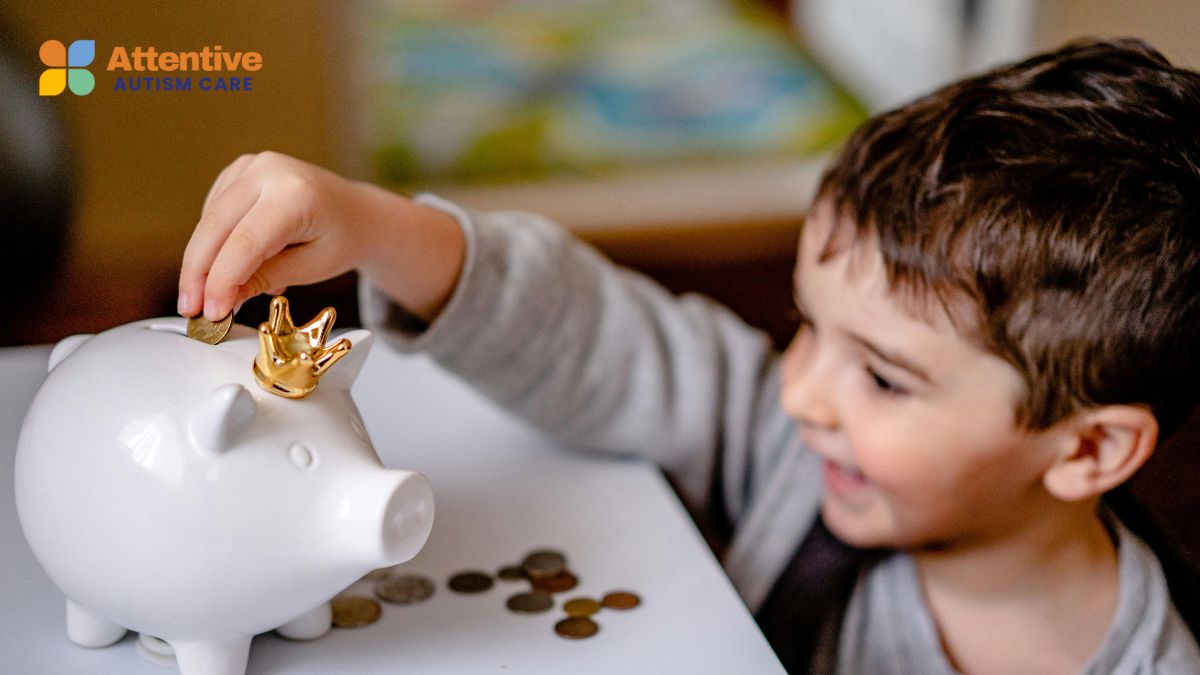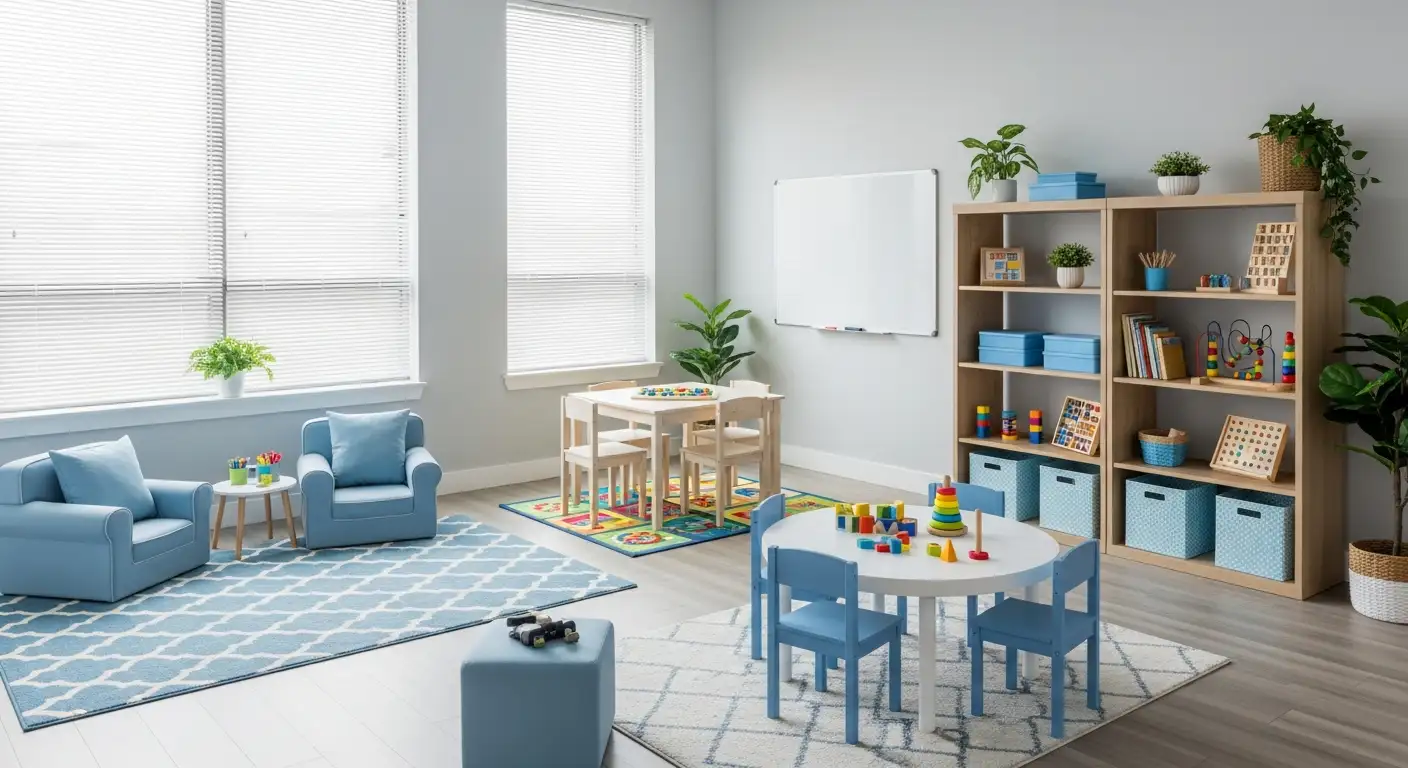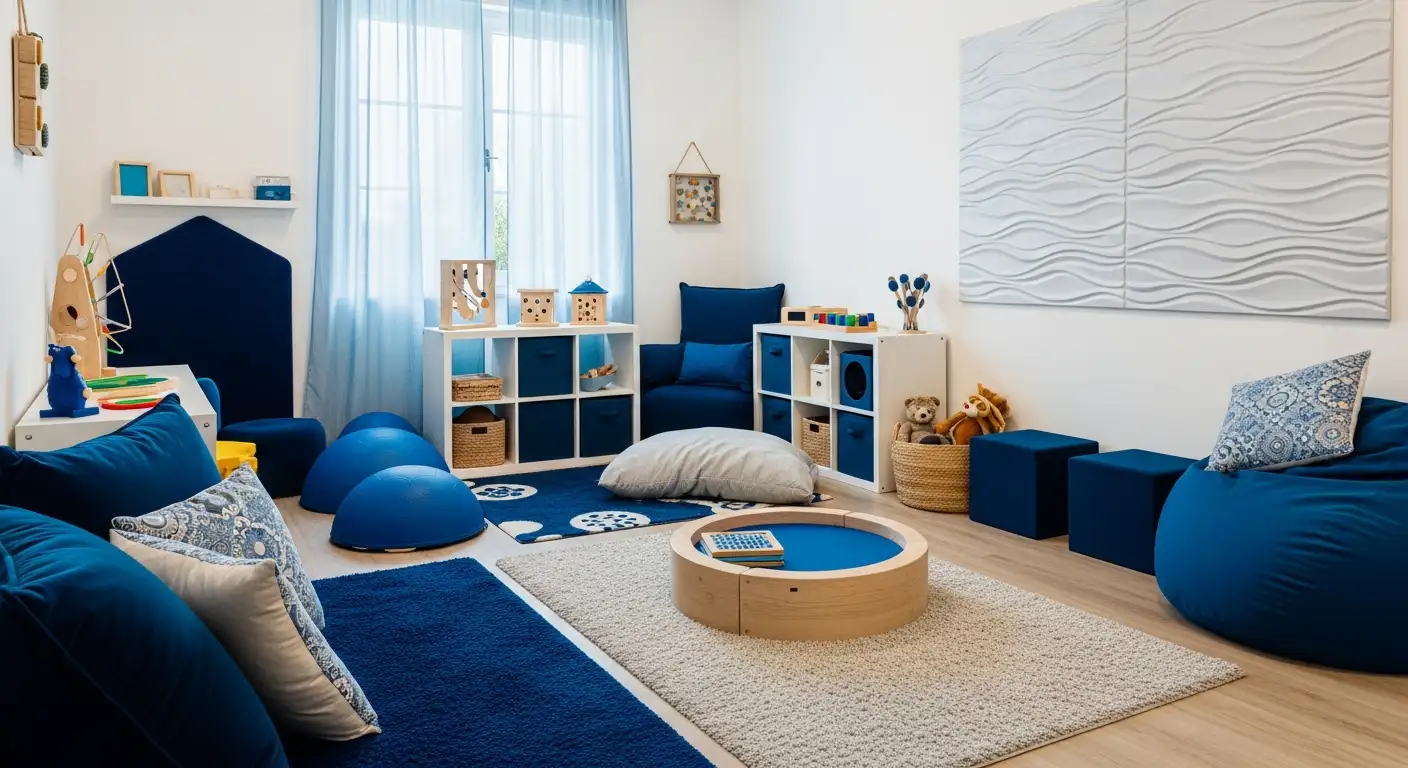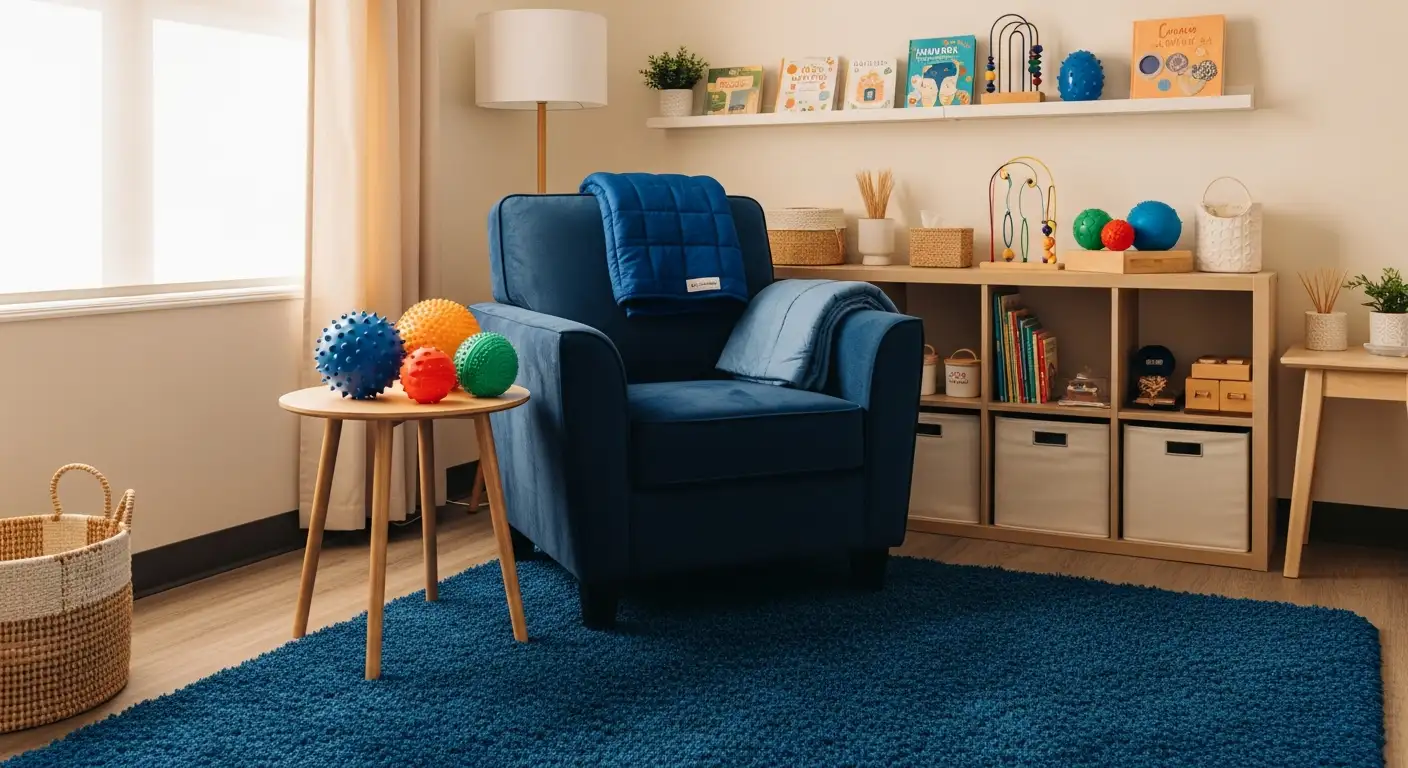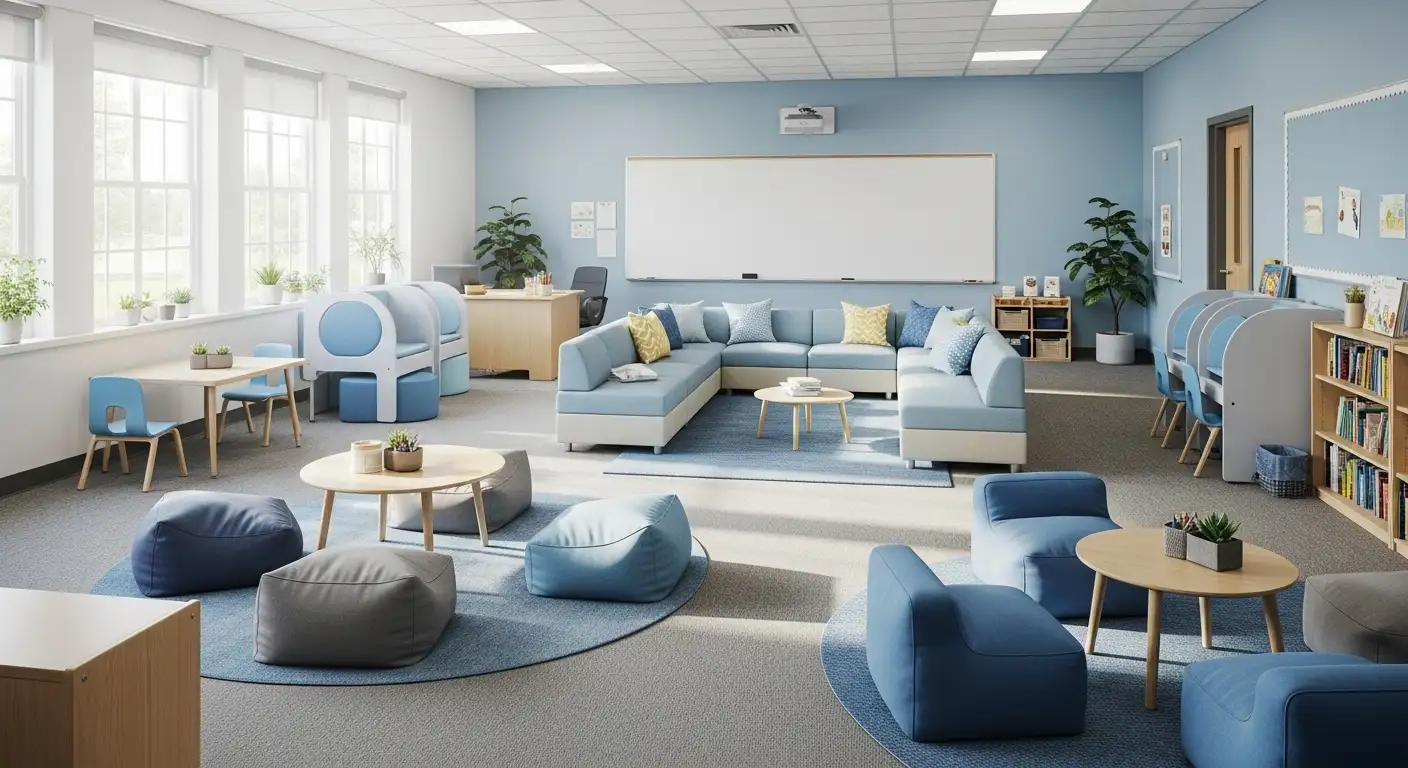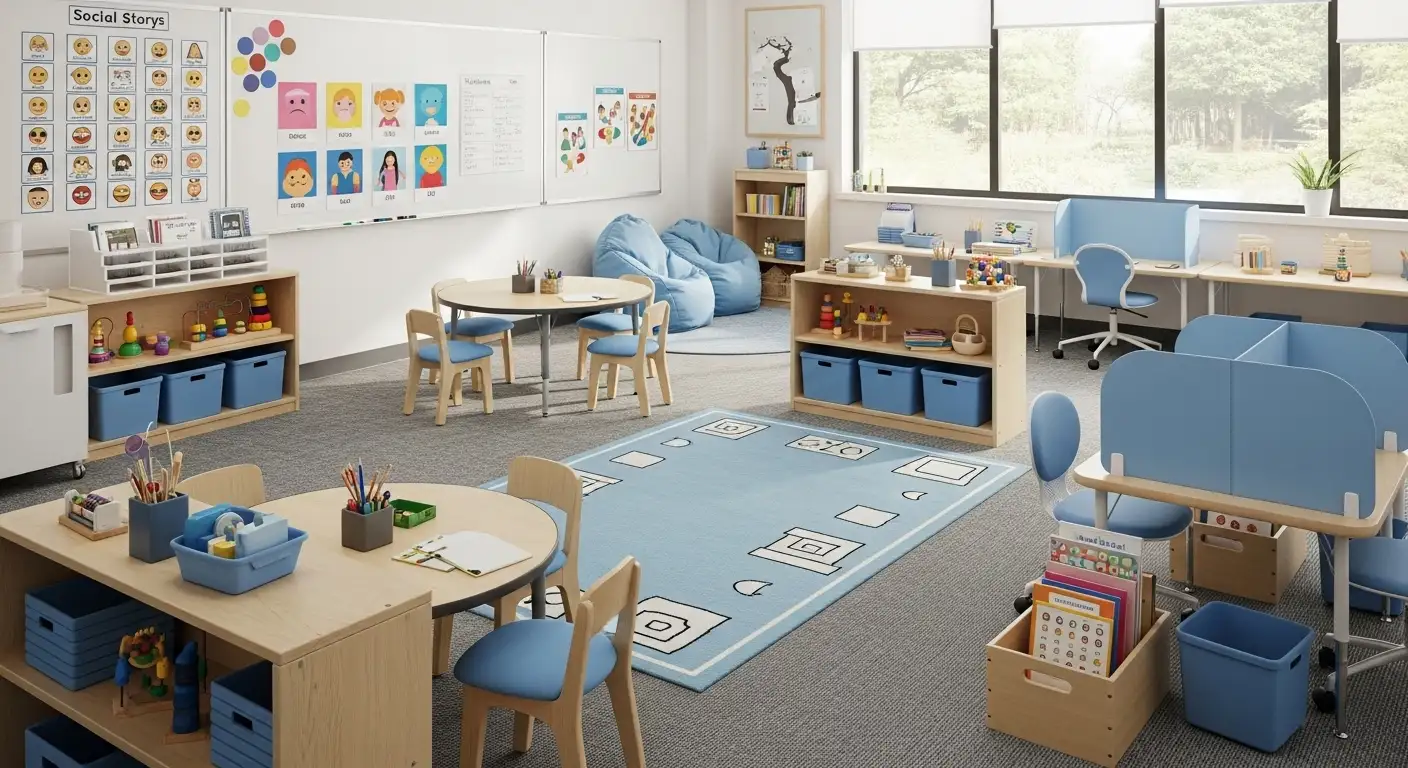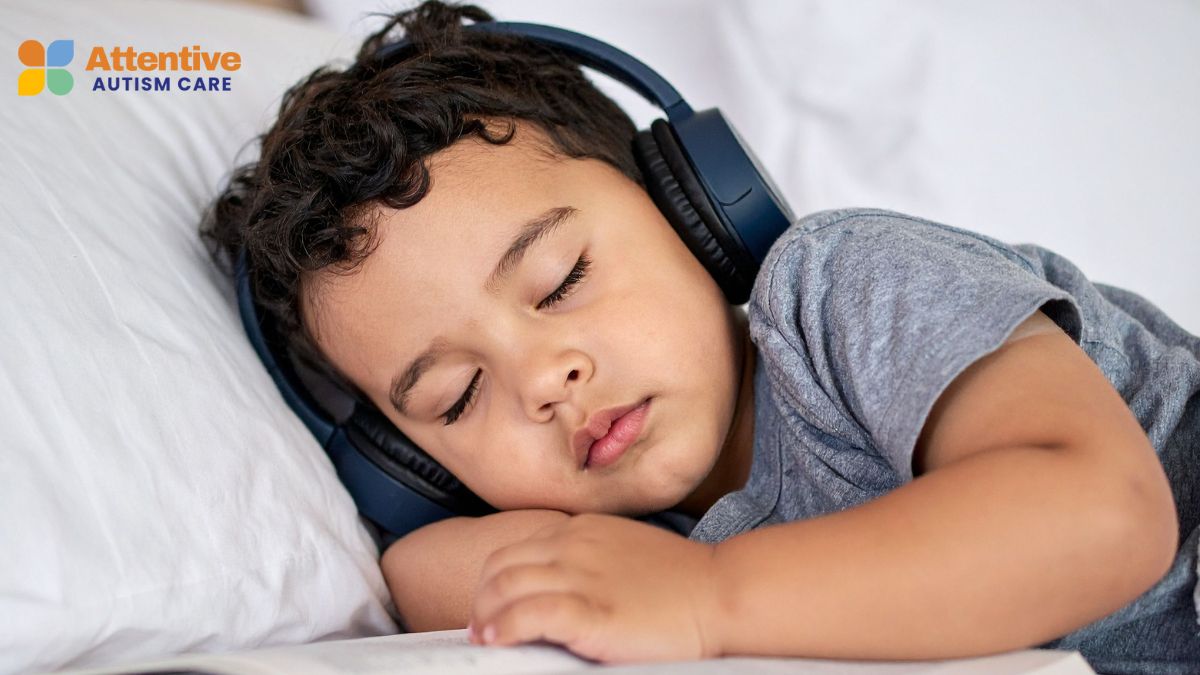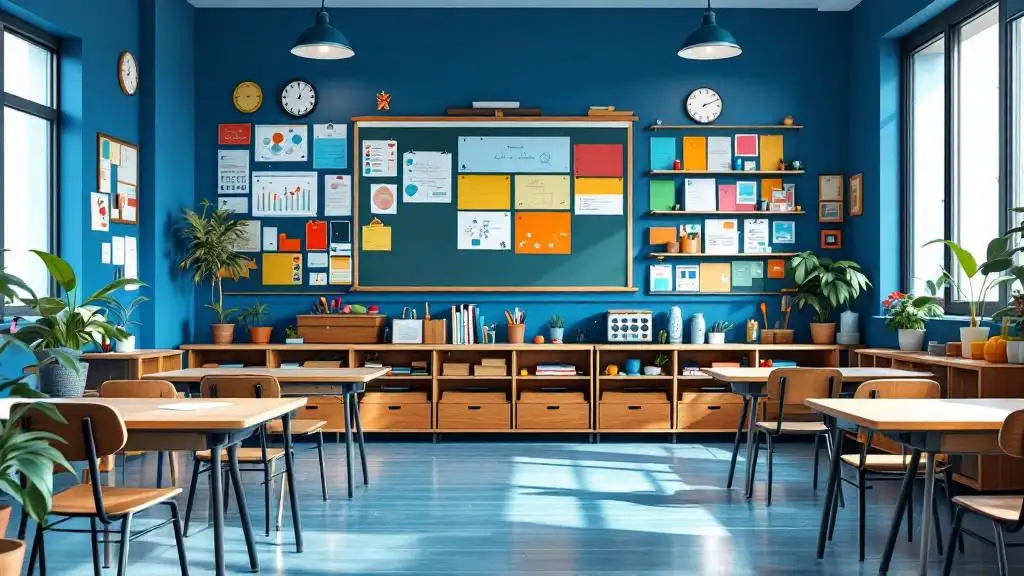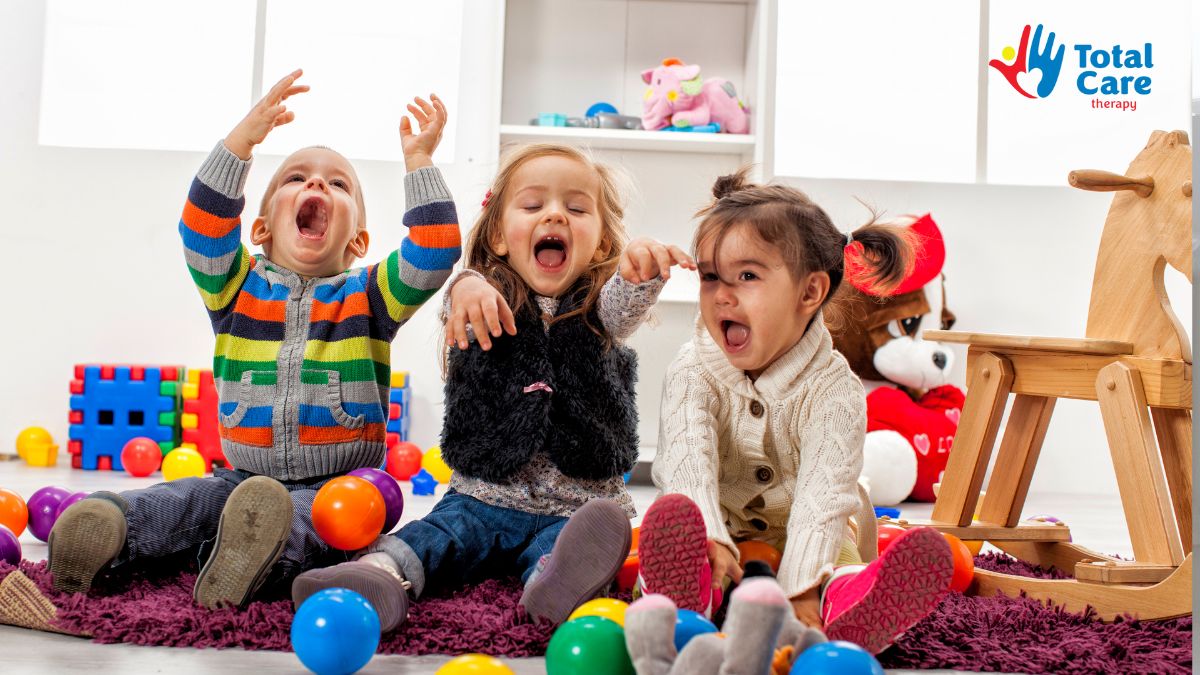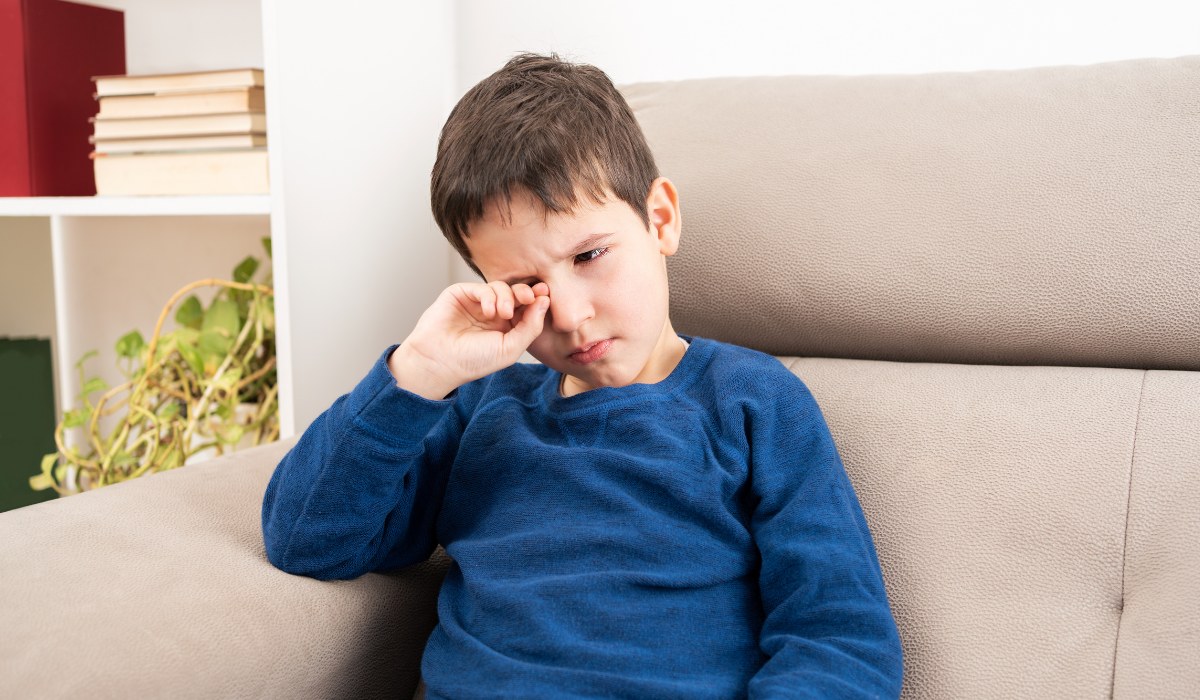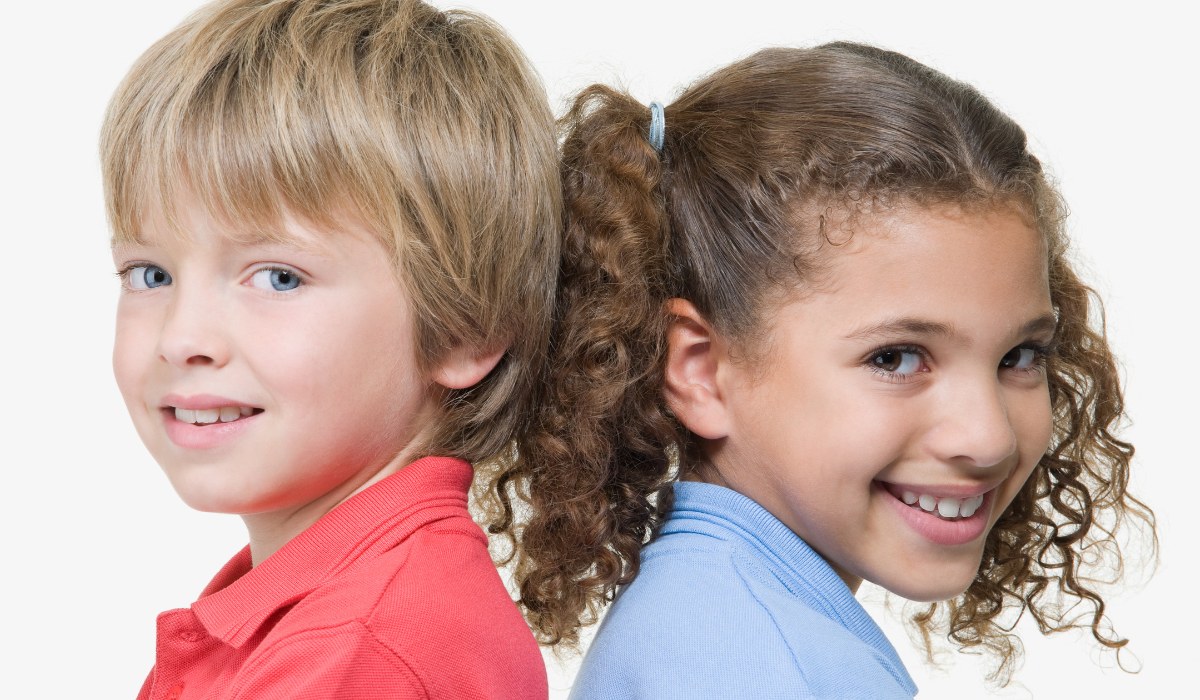Supporting Autistic Children in Developing Social Skills
Fostering Social Growth in Children on the Spectrum
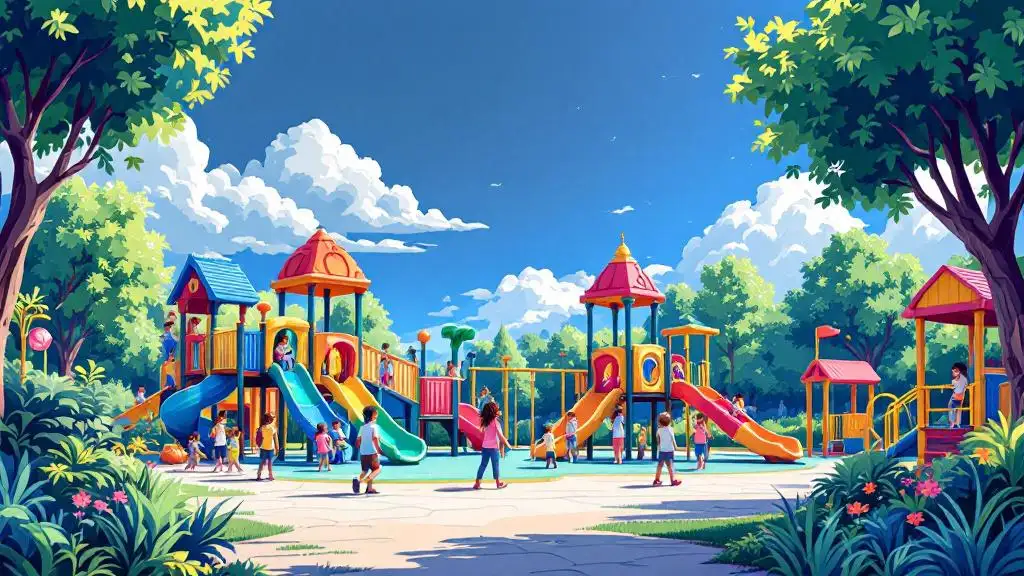
Understanding and Supporting Social Skill Development in Autism
Supporting autistic children in developing social skills is a multifaceted process that requires understanding their unique challenges and utilizing evidence-based strategies to foster meaningful interactions. This article explores assessment tools, effective intervention methods, targeted skills, and practical approaches for parents, educators, and professionals dedicated to enhancing social competence in children with autism.
Assessment Tools and Resources for Social Skills Development

What assessments and resources are available to support social skills development in autistic children?
Supporting social skills development in children with autism involves using a variety of assessments and resources tailored to their unique needs. Several standardized tools are designed to evaluate social communication, behavior, and adaptive functioning, providing a comprehensive picture of strengths and areas needing growth.
Among these, the Social Skills Improvement System (SSIS) stands out as a widely used assessment that measures social skills, problem behaviors, and academic competence. It gathers input from teachers, parents, and the children themselves, offering a multi-perspective view.
The Vineland Adaptive Behavior Scales is another valuable tool. It assesses practical life skills, communication, socialization, and daily living skills. The Vineland’s flexible format allows for interviews and direct observation, making it suitable across different age groups.
The Behavior Assessment System for Children, Third Edition (BASC-3) evaluates behavioral, emotional, and social functioning. It helps identify behaviors that may interfere with learning and relationships, guiding targeted interventions.
Lastly, the Autism Social Skills Profile (ASSP-2) is specifically designed for children with autism to understand their social abilities and challenges. It focuses on social reciprocity, motivation, and social cognition.
Assessment methods vary and include direct observation, rating scales completed by caregivers and teachers, and self-report questionnaires for older children and adolescents. Observing children in natural settings like classrooms, playgrounds, or community activities provides contextual insight into their social interactions.
In addition to assessments, numerous resources aim to support social skills development beyond evaluation. Structured therapy programs such as UCLA’s PEERS (Program for the Education and Enrichment of Relational Skills) are evidence-based 16-week curricula focusing on teaching friendship skills, social communication, and relationship-building strategies. The PEERS program emphasizes real-life application and has shown lasting benefits for adolescents and young adults.
Community social skills groups provide children with structured opportunities to practice interactions with peers under the guidance of trained facilitators. These groups often follow curricula that promote predictability, concrete actions, cooperation, and scenarios directly applicable to everyday life.
Visual aids are powerful tools for teaching social skills. These include social stories, which depict social situations through pictures and words, helping children understand expectations and appropriate responses. Teachers and therapists often use visual supports like scripts, emotion cards, and schedules to make social cues more explicit.
Digital tools and downloadable resources further enhance learning. Apps, social scenario videos, and interactive games simulate social interactions, allowing children to learn and practice skills in engaging ways. For example, video self-modeling (VSM)—where children watch videos of themselves successfully performing social behaviors—has gained recognition for its effectiveness.
Practical activities such as role-playing, role reversals, and engaging in social games are crucial for translating skills into real-world settings. These activities can be conducted in therapy sessions, classrooms, or at home, providing learners with opportunities to apply what they've learned.
Community programs and online platforms connect families with peer support groups, social clubs, and extracurricular activities tailored to autistic children. These settings promote naturalistic social interaction, friendship building, and support skill generalization.
In summary, a combination of assessment tools like SSIS, Vineland, BASC-3, and ASSP-2, along with diverse resources such as PEERS, social skills groups, visual supports, social stories, digital tools, and community programs, creates a robust framework for fostering social development in children with autism. Using these tools strategically helps customize interventions, track progress, and encourage social confidence and competence.
How Parents and Educators Can Facilitate Social Skills Development
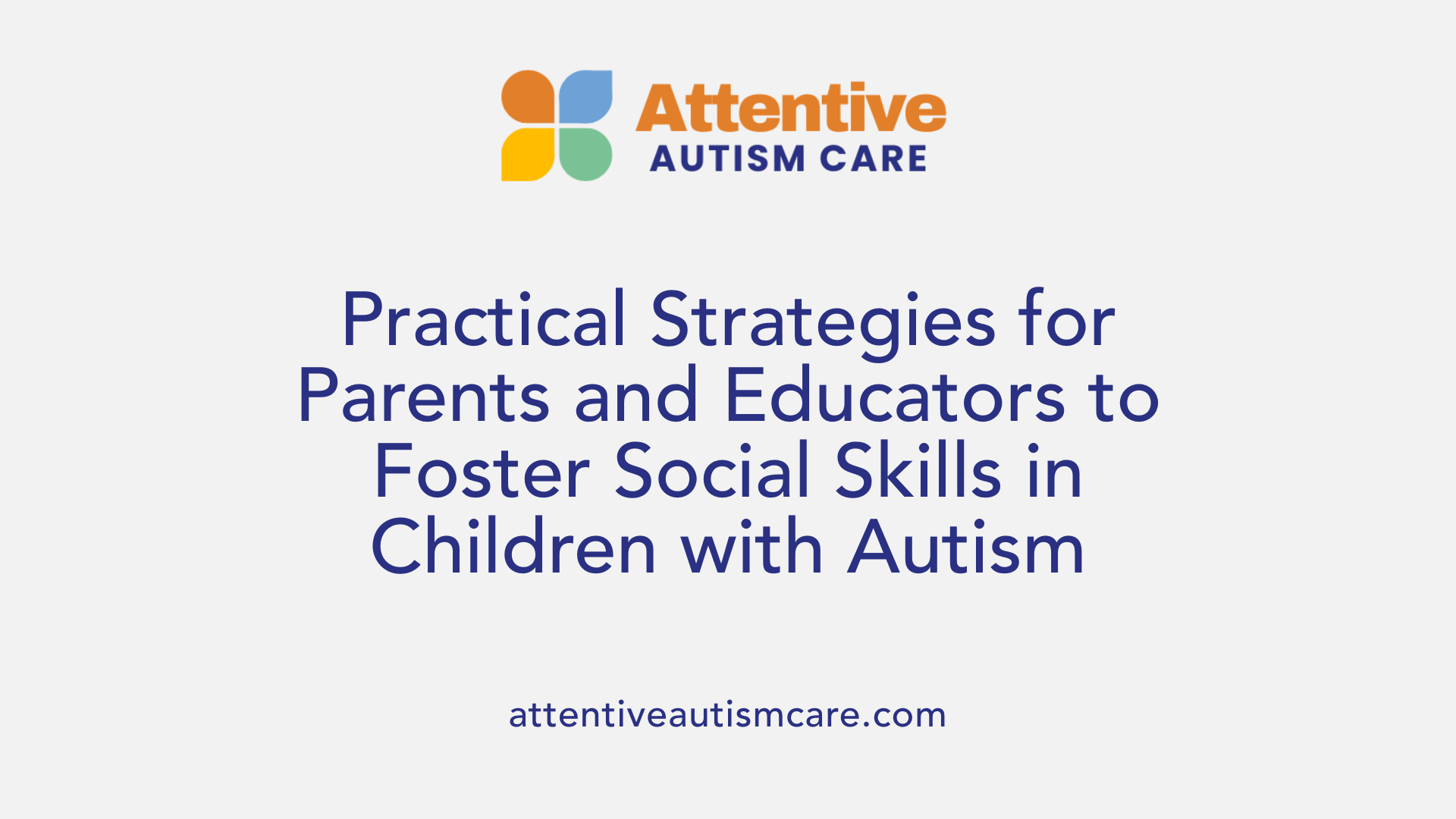
How can parents and educators facilitate social skills development in children with autism?
Supporting children with autism in developing social skills is a collaborative effort that requires creating a nurturing and structured environment. One of the fundamental approaches involves establishing consistent routines and routines that include visual supports and social stories. These tools help reduce anxiety by providing clear expectations and predictable social cues, making interactions less overwhelming and more understandable.
Modeling appropriate behaviors is also essential. Adults and peers can demonstrate social interactions like greetings, sharing, and turn-taking. These models serve as real-life examples that children can imitate, reinforcing positive behaviors through observation.
Explicit instruction and skill-based teaching lay the foundation for social competence. This involves breaking down complex social skills into manageable steps and practicing them in various settings. For example, teaching a child how to enter a conversation using scripts or how to appropriately respond to peer gestures helps build confidence and competence.
Visual supports—including cue cards, emotion charts, and social stories—are effective in illustrating social norms and expected behaviors. Social stories, in particular, use pictures and simple language to prepare children for specific social situations, helping them understand what to expect and how to respond.
Collaboration with specialists like speech therapists, occupational therapists, and behavior analysts enhances the effectiveness of interventions. These professionals can provide tailored strategies, conduct assessments, and suggest tools suited to each child’s unique needs.
Incorporating evidence-based therapies such as Applied Behavior Analysis (ABA), Pivotal Response Treatment, and Naturalistic Developmental Behavioral Interventions (NDBIs) ensures interventions are grounded in research. These approaches focus on reinforcing desired behaviors and promoting spontaneous social interactions.
Peergroup involvement and social skills groups create opportunities for children to practice skills within a safe, predictable environment. Activities like role-playing, guided play, and cooperative games foster naturalistic social learning.
Positive reinforcement—praising efforts and rewarding success—plays a crucial role in motivating children. Celebrating small milestones encourages ongoing engagement and fosters self-esteem.
Finally, supporting the well-being of caregivers is vital. Addressing caregiver stress through mindfulness practices, access to support networks, and flexible communication options such as telehealth can help sustain a positive learning environment. When families and educators work together with patience and consistency, children with autism are more likely to develop meaningful social connections and thrive in their social environments.
Targeted Social Skills and Teaching Strategies
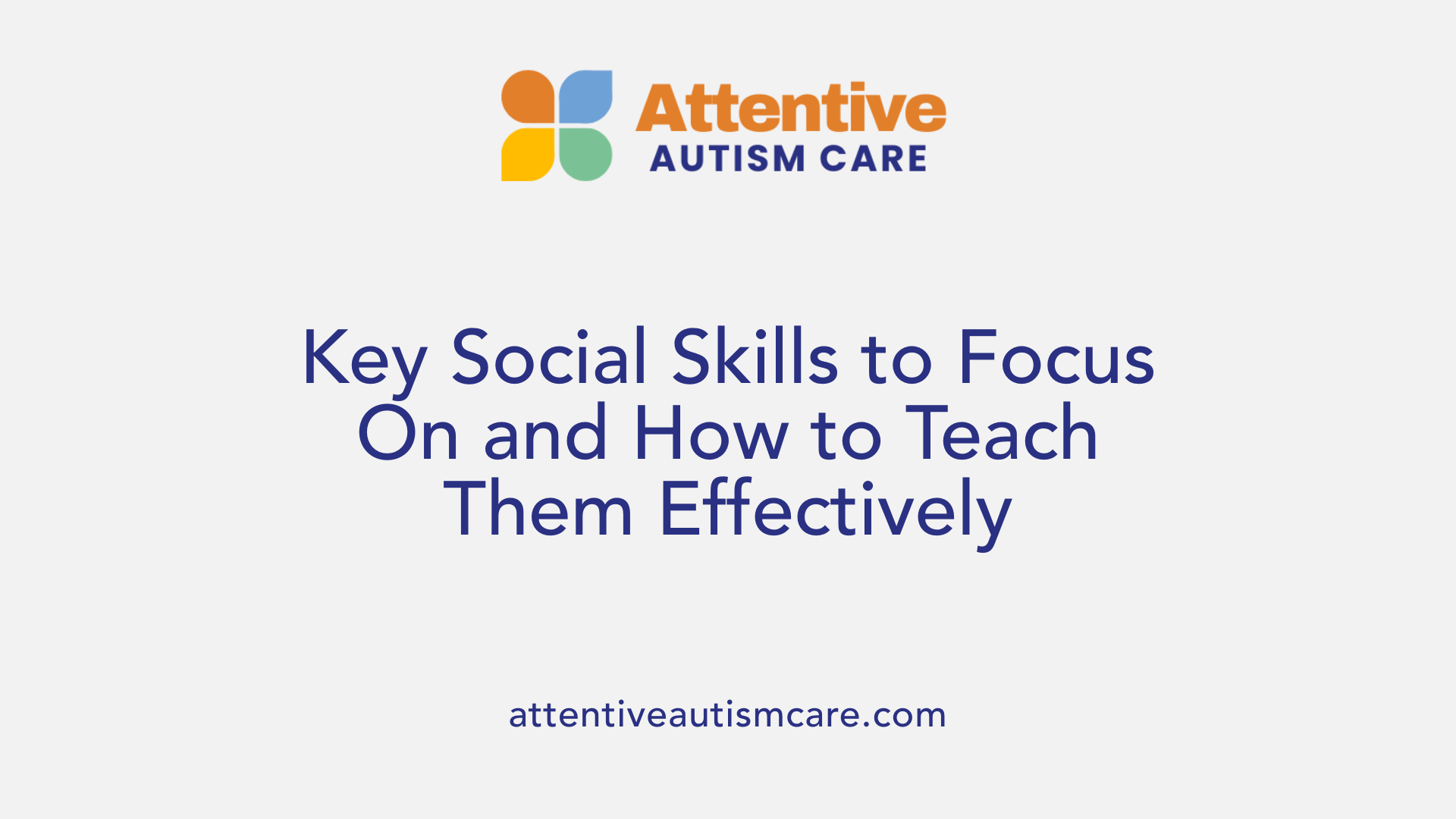
What specific social skills should be targeted in children with autism, and how can they be taught?
Children with autism often face challenges in various social domains, making it important to identify and teach specific skills that can help them navigate social environments more effectively.
Some of the key social skills include understanding and expressing emotions, initiating and maintaining conversations, taking turns, sharing, making eye contact, understanding social cues, and respecting personal boundaries. Ability to interpret body language, tone of voice, and facial expressions is also vital.
To teach these skills, professionals and caregivers can employ a variety of methods tailored to the child's developmental level and interests. Social stories are highly effective; these are short, visual narratives that depict social situations and appropriate responses, helping children understand what to expect and how to behave.
Visual supports such as emotion cards, social scripts, and picture exchange communication systems (PECS) assist children in recognizing feelings and practicing communication.
Role-playing exercises allow children to practice real-life social interactions in a safe and structured environment. For example, acting out scenarios like greeting a peer or asking for help helps concrete understanding.
Video modeling is another useful technique where children watch videos of peers or adults successfully engaging in social behaviors, which they can imitate.
Developmentally appropriate instruction involves breaking down skills into small, manageable steps and gradually increasing complexity. It’s crucial to individualize approaches based on each child's profile, including assessments that pinpoint specific deficits.
Professionals often combine techniques like social skills groups, which provide peer interaction in a structured setting, with targeted interventions at home and school.
Generalization and maintenance of skills are achieved through consistent practice across different settings—home, school, community—and with various people. Supporting ongoing reinforcement with positive feedback helps solidify these skills.
Moreover, incorporating children’s interests—like humor, visual arts, or favorite characters—can increase motivation.
In sum, teaching social skills requires a comprehensive, personalized strategy that emphasizes understanding, communication, and social reciprocity, gradually building competence through multiple methods and reinforcement in everyday situations.
Effective Strategies and Evidence-Based Interventions
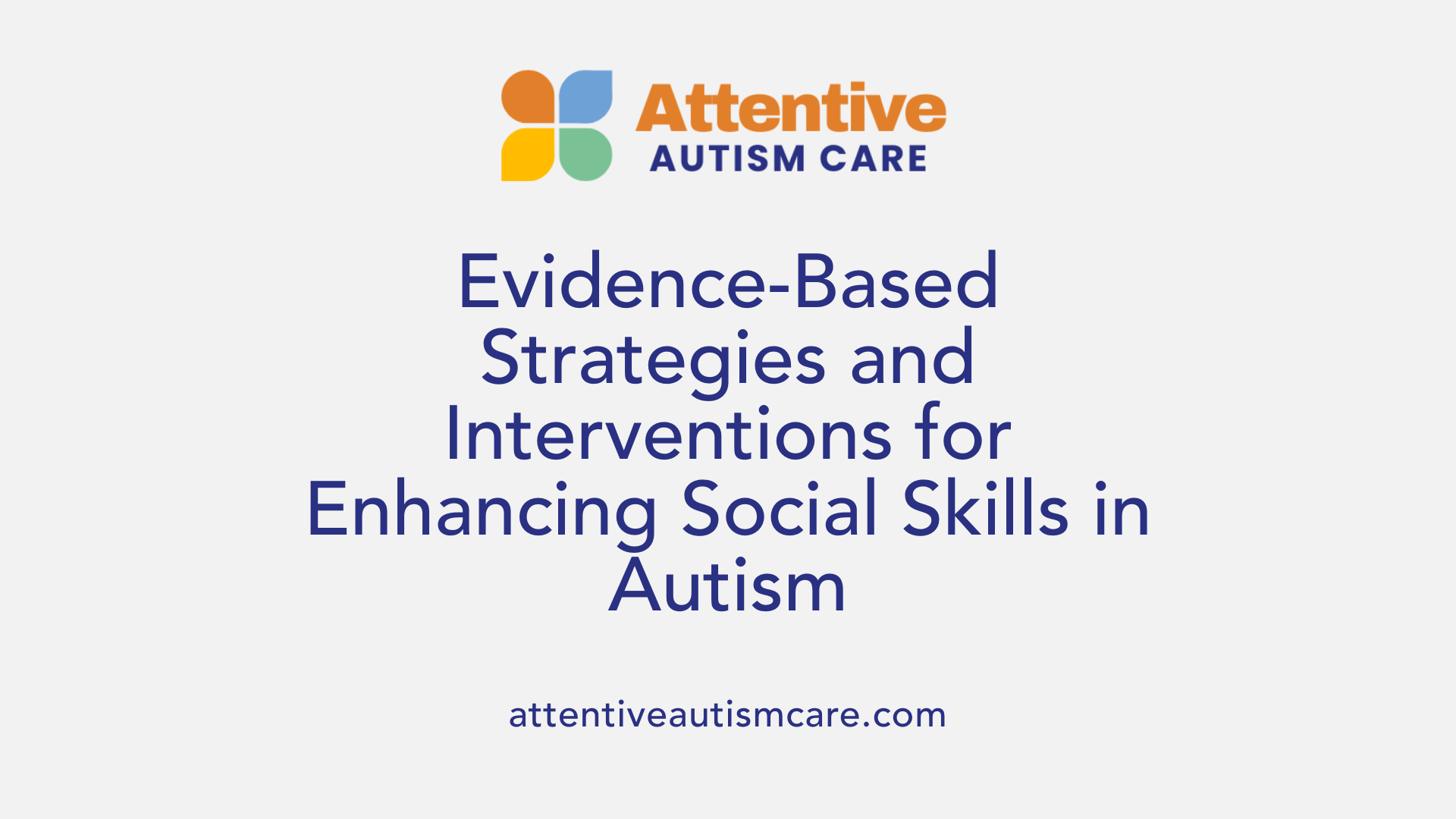
What are effective strategies and interventions for developing social skills in children with autism?
Developing social skills in children with autism requires a combination of structured, evidence-based approaches tailored to each child's unique needs. Several interventions have been shown to be effective and are widely used by professionals.
One of the most well-supported methods is the use of social skills training programs. These programs often include activities like social stories, role-playing, and social skills groups that provide predictable environments where children can practice key behaviors in a safe, supportive setting. Social stories, which use pictures and simple narratives, help children understand social cues and appropriate responses, preparing them for real-life situations.
Applied Behavior Analysis (ABA) is regarded as a highly effective intervention. Techniques like Discrete Trial Training (DTT) and Natural Environment Teaching (NET) within ABA focus on reinforcing positive social behaviors and reducing challenging behaviors. ABA therapy is personalized, aiming to improve communication, social interactions, and behavioral regulation.
Video modeling has emerged as a particularly powerful strategy. It involves children watching videos of themselves or others successfully performing social behaviors. Research indicates that video modeling can lead to significant improvements in social reciprocity, initiating conversations, and understanding social cues. Its visual and repeatable format makes it highly accessible and engaging for children.
Early intervention—initiated before the child starts school—is crucial. Implementing structured, naturalistic, and technology-supported approaches early on increases the likelihood of meaningful progress. Therapies that combine social communication techniques, such as speech therapy and occupational therapy, with behavioral strategies optimize outcomes.
Support for social skills development also includes peer-mediated interventions, where typically developing peers are involved in facilitating social interactions, and peer mentoring programs. These strategies promote natural socialization and help generalize skills learned in therapy to everyday contexts.
Consistency and opportunities for social interaction are vital. Creating regular, meaningful social experiences—whether through community activities, structured play groups, or school-based programs—helps children generalize learned skills to real-world settings. Professional guidance, combined with family involvement and educational support, ensures a comprehensive approach.
In summary, effective strategies include evidence-based programs such as social skills training, ABA, social stories, peer modeling, and video modeling. Early, personalized interventions that incorporate structured yet naturalistic social opportunities foster the best outcomes for children with autism to develop their social competencies and build meaningful relationships.
Evidence Supporting the Effectiveness of Social Skills Programs
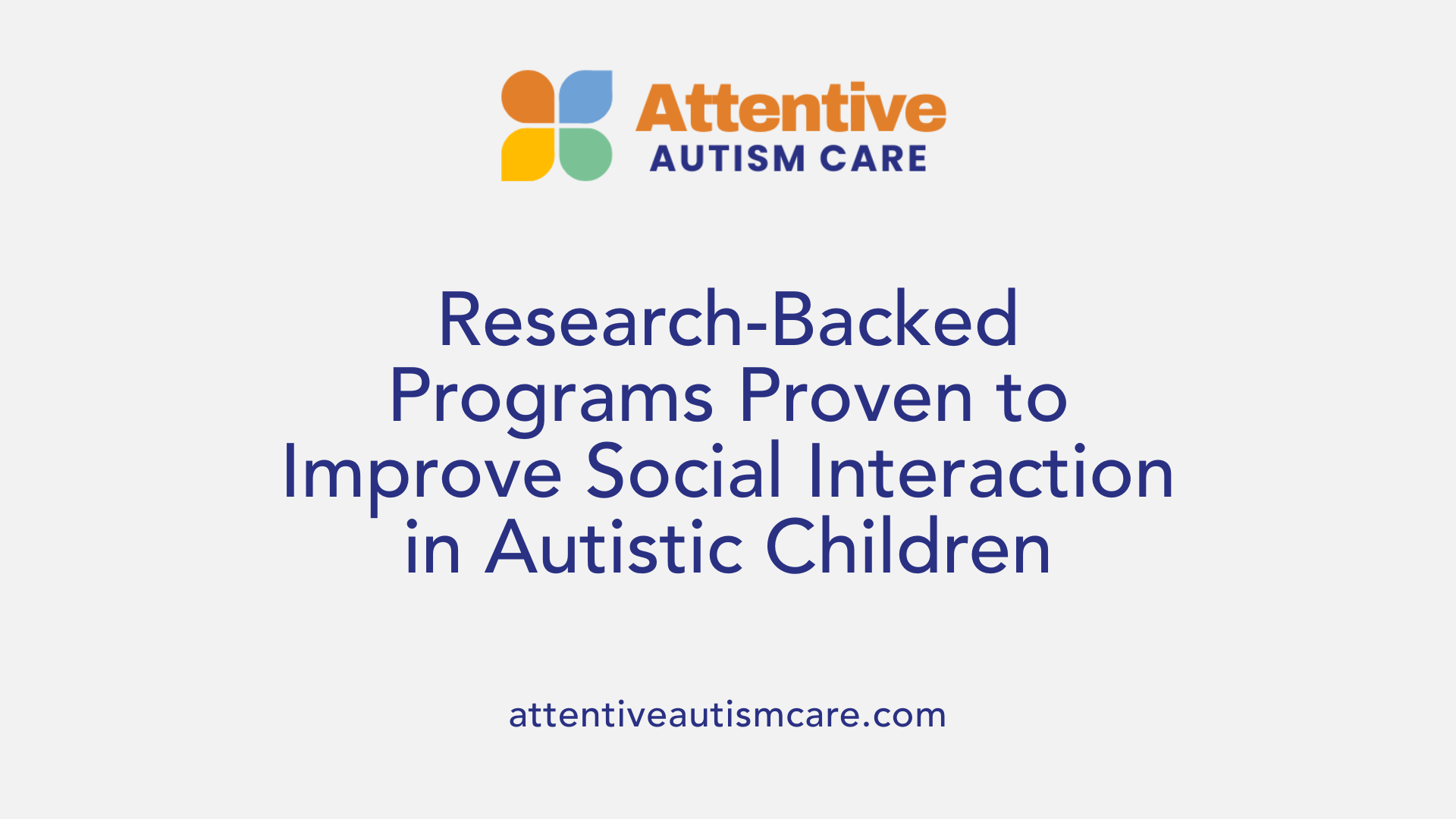
Are there evidence-based programs or therapies available to improve social interaction in autistic children?
Yes, there are several well-recognized programs and therapeutic approaches grounded in research to enhance social skills among children with autism. These interventions are designed to develop social reciprocity, increase social participation, and foster meaningful peer relationships.
One of the most prominent is Social Skills Training (SST), which uses structured curricula to teach specific social behaviors, including conversation skills, understanding social cues, and emotional regulation. Research shows that SST effectively improves social competence, with children demonstrating increased interaction and reciprocity after participating.
The PEERS program at UCLA exemplifies a comprehensive 16-week curriculum focusing on social and relational skills, including making and maintaining friendships, understanding social rules, and even dating tips for teenagers. Studies indicate that participation in PEERS results in lasting benefits, with improvements sustained for months after the program ends.
Video modeling provides another powerful tool, employing videos of children successfully performing social behaviors to teach relevant skills. Meta-analyses and individual studies report high efficacy, with percentage reduction scores in problematic behaviors often exceeding 70%, and evidence suggests these benefits can persist long-term.
Social stories are narratives explicitly illustrating social situations, expected behaviors, and responses. They support visualization and comprehension, enhancing understanding of social norms and reducing anxiety during social interactions.
Peer-mediated interventions involve typically developing children or peers as models and facilitators. These approaches promote naturalistic social interactions and generalization of skills beyond therapy settings.
Naturalistic Language Strategies such as JASPER (Joint Attention, Symbolic Play, Engagement, and Regulation) emphasize foundational skills like joint attention and communication at an early age. These strategies are especially effective for addressing social deficits in preschool children.
Combining techniques—such as ABA-based methods, visual supports like social stories, peer engagement, and naturalistic teaching—forms a holistic approach aligned with evidence-based practices. Studies document that such multi-modal interventions yield meaningful improvements in social reciprocity, participation, and overall functioning.
Studies demonstrating improvements
Multiple peer-reviewed studies support these interventions. For example, a 2020 meta-analysis concluded that social skills training significantly enhances social initiation, reciprocal interactions, and empathy. Another longitudinal study highlighted the sustained benefits of PEERS, with participants showing better social outcomes even one year post-intervention.
Statistical significance of interventions
Research consistently reports that improvements attributable to these interventions are statistically significant, with p-values often less than 0.01, indicating strong evidence that the observed effects are unlikely due to chance. Effect size measurements indicate moderate to large improvements, especially with intensive, individualized programs.
Long-term benefits of programs like PEERS
Longitudinal research reveals that programs such as PEERS not only improve immediate social skills but also foster longer-lasting changes. Participants often experience increased confidence, better peer relationships, and improved social understanding months to years after completing the program.
Role of structured curricula
Structured curricula provide clear guidance for facilitators and participants, ensuring consistent delivery of social skills lessons. They facilitate progress tracking and help tailor interventions to individual needs, which is associated with higher success rates.
Social reciprocity and participation improvements
Enhanced social reciprocity—mutual sharing, responding appropriately, and engaging in reciprocal interactions—is a primary goal of these programs. Empirical evidence consistently shows increased rates of reciprocal behavior and participation in group activities following intervention.
| Program/Strategy | Demonstrated Outcomes | Supporting Evidence | Duration and Setting |
|---|---|---|---|
| PEERS | Improved friendships, social understanding | Long-term follow-up studies show sustained gains | 16-week group in schools |
| Video Modeling | Reduced challenging behaviors, increased social initiations | High percentage reductions in problematic behaviors | clinics, homes, schools |
| Social Stories | Increased understanding of social cues, reduced anxiety | Controlled trials show effectiveness in diverse settings | therapy and classroom settings |
| Peer-mediated Programs | Higher engagement, improved peer skills | Multiple studies support success with peer involvement | school and community groups |
| JASPER (Early Intervention) | Enhanced joint attention, communication skills | Randomized controlled trials report gains | preschool programs, clinics |
Developing social skills in children with autism involves a multifaceted approach supported by strong scientific evidence. Programs that incorporate visual supports, peer involvement, and naturalistic teaching techniques are most effective. Regular assessment, individualized goals, and ongoing reinforcement are essential to maintain and generalize these skills across environments.
Role of Visual Supports, Social Stories, and Play in Social Skill Development
How do visual aids like social stories and emotion cards support children with autism?
Visual supports are crucial tools in teaching social skills to children with autism. Social stories are specially crafted narratives that depict social situations, helping children understand behaviors, expectations, and social cues in a predictable and engaging way. These stories use simple pictures and words to illustrate how to act, what to expect, and how others might feel in various scenarios.
Emotion cards and facial expression charts are practical visual aids that help children recognize and label emotions, facilitating better emotional understanding and empathy. When children see a picture of a happy face, a sad face, or a frustrated look, they learn to associate these expressions with feelings, improving their ability to interpret others' emotions.
Collaborations with institutions like the University of Washington READI Lab and technology companies like Microsoft Office have enhanced these tools, making them more personalized and accessible. For example, customized social stories tailored to a child's specific interests and challenges can promote better comprehension and retention.
What are some practical activities that can help develop social skills?
Engaging in creative activities like art projects, baking biscuits, or cooking together provides natural opportunities to discuss emotions and social cues. For instance, making art can include talking about feelings expressed through colors or shapes. Similarly, cooking activities promote communication and sharing while guiding children through routines and turn-taking.
Playing games is another effective approach. Understanding what a 'game' involves, how to participate, and learning to take turns helps children grasp social rules. Teaching scripts or phrases for entering or joining a game, such as saying,
Integrating Social Skills Development into Daily Life
How can social skills be practically incorporated into everyday activities?
For children with autism, learning social skills is more effective when skills are practiced in real-life settings. Incorporating social skill development into daily routines involves using everyday activities as opportunities for learning. For example, during meal times, parents can model polite conversation or practice sharing. At the store, children can learn to ask politely for items or understand personal boundaries.
Visual supports like social stories and pictorial scripts can guide children through typical social interactions they might encounter during their day. Playing with toys or engaging in craft activities allows children to practice expressive skills, like sharing and turn-taking, in safe, structured environments.
Play, outings, and family routines as learning opportunities
Play activities, especially those that mimic real-life scenarios, are excellent for practicing social behaviors. Building blocks, role-playing with dolls, or engaging in board games not only promote interaction but also teach children about cooperation, waiting for turns, and understanding rules.
Family outings are natural opportunities to teach children about social norms. Visiting parks, restaurants, or family gatherings enables children to observe and practice appropriate social behaviors in varied settings. Rehearsing specific responses or behaviors before outings using social stories or visual supports prepares children for positive experiences.
Implementing social skills in school and community environments
Schools are ideal settings for structured social skills lessons. Teachers can set up social skills groups, use peer-mediated strategies, and incorporate social stories into classroom routines to reinforce learning. Activities like group projects or cooperative games facilitate peer interaction and help children generalize skills across settings.
Community programs, sports teams, or clubs offer social opportunities that extend learning beyond school. These environments help children navigate different social rules and build friendships. Consistent reinforcement by adults in these settings supports sustained progress.
Utilizing peer modeling and structured play
Peer modeling involves neurotypical children or trained peers demonstrating appropriate social behaviors. When children observe and imitate these models, they learn subtle cues and responses more naturally. Structured play activities like role-playing scenarios or social games create safe opportunities for children to practice and refine their skills.
For example, a social skills group may include activities such as practicing greetings, sharing stories, or resolving conflicts, all led by a peer or facilitator. Repetition in these settings helps children internalize expected behaviors.
Celebrating milestones and progress
Recognizing and celebrating small successes is crucial in motivating children with autism. Parents and teachers should praise efforts, improvements, and successful interactions. Using visual charts or reward systems can make progress tangible and encourage continued effort.
Decorating achievement boards or offering tangible rewards like stickers or tokens reinforce positive behaviors and help children associate effort with success. Highlighting progress in social reciprocity, such as initiating contact or understanding emotions, boosts self-esteem and fosters ongoing development.
By integrating social skills into daily routines, play, and community engagement, children with autism can build robust social abilities. Consistent practice, positive reinforcement, and a supportive environment are essential components for nurtured growth and meaningful social connections.
Building Confidence and Emotional Resilience in Autistic Children
How can we address social anxiety and overwhelm?
Many autistic children experience social anxiety and feelings of overwhelm, especially in unpredictable or highly stimulating environments. To help them cope, it’s important to create predictable, structured social situations and provide quiet, safe spaces where they can retreat if overwhelmed. Using visual supports like social stories and visual schedules can prepare children for upcoming social activities, reducing anxiety. Encouraging gradual exposure to new social settings, starting with small groups or one-on-one interactions, allows children to build confidence at their own pace. Recognizing signs of stress, such as racing heartbeat or stomach aches, and giving children non-verbal signals like help cards or break cards enable them to communicate their need for a pause.
How does role-modeling and dramatization of mistakes foster learning?
Role-modeling and dramatization are powerful strategies in teaching social skills and building emotional resilience. When adults or peers demonstrate appropriate social behaviors through role-playing, children can observe and imitate these actions. Dramatizing mistakes, such as forgetting to say “please” or accidentally interrupting, helps children understand that everyone makes errors and that mistakes are part of learning. By acting out common social scenarios, children learn appropriate responses in a safe environment, reducing fear of failure and encouraging a growth mindset.
How can understanding emotions improve social interactions?
Promoting emotional understanding in autistic children is essential for developing empathy and effective communication. Using visual aids like emotion cards, cartoon facial expressions, and story discussions helps children recognize and label their own feelings and others’ emotions. Talking about daily experiences and comparing different emotional responses help children understand that feelings are normal and manageable. For instance, discussing how a character in a story feels after losing a game can teach children about both empathy and emotional regulation. Strengthening this understanding helps children navigate social situations more confidently and reduce frustration or misunderstandings.
What are some coping skills for social situations?
Teaching coping skills prepares autistic children for complex social interactions. Strategies include using tangible ‘help’ cards or signaling devices to request a break, practicing calming techniques like deep breathing or counting, and preparing scripts for common social scenarios, such as entering a group or asking for help. Role-playing different social situations helps children practice responses in a controlled setting. Additionally, teaching resilience involves helping children understand that not every social interaction will go perfectly and that mistakes are opportunities to learn. Building resilience encourages children to persevere despite setbacks.
How can positive reinforcement and celebrating progress enhance confidence?
Celebrating small successes and milestones reinforces positive behaviors and boosts self-esteem. Praising children for engaging in social interactions, trying new activities, or demonstrating emotional awareness encourages continued effort. Visual charts or progress trackers can visually show their growth over time, fostering a sense of achievement. Celebrating progress, no matter how modest, helps children recognize their abilities and develops a resilient mindset. Consistent positive reinforcement across home, school, and therapy settings ensures that children feel supported and motivated to develop their social skills.
| Strategy | Description | Benefits |
|---|---|---|
| Visual Supports | Use social stories, visual schedules, and emotion cards | Reduces anxiety, enhances understanding |
| Gradual Exposure | Introduce social environments step-by-step | Builds confidence, reduces overwhelm |
| Role-Playing and Dramatization | Practice social scenarios and mistakes through role-play | Teaches responses, normalizes errors |
| Emotion Recognition Tools | Use of pictures, stories, and discussion to identify feelings | Promotes empathy and emotional insight |
| Positive Reinforcement | Reward effort and progress with praise or tangible items | Motivates continued learning |
| Celebrating Achievements | Acknowledge milestones to boost self-esteem | Enhances confidence and resilience |
Creating a supportive environment that emphasizes understanding, patience, and celebration of progress fosters emotional resilience. With consistent practice and positive reinforcement, autistic children can develop the self-confidence necessary to navigate social situations successfully and thrive in their relationships.
Empowering Growth and Connection
Developing social skills in children with autism is a comprehensive effort that combines assessment, tailored interventions, practical strategies, and home and school involvement. Through structured programs, visual supports, and positive reinforcement, children can progressively enhance their social competence, leading to richer relationships, greater independence, and a deeper sense of belonging. Continued collaboration among parents, educators, therapists, and community resources is essential for nurturing these vital skills and empowering autistic children to reach their full social potential.
References
- Making friends - supporting your autistic child
- Social skills and autism | Autism Speaks
- Effect of social skills training on interpersonal interactions of children ...
- Making (and Keeping) Friends: A Model for Social Skills Instruction
- 8 Ways to Boost Social Skills in Kids with Autism
- Autism Social Skills: How to Improve Social Interaction
- Learning Social Skills For Children With Autism












